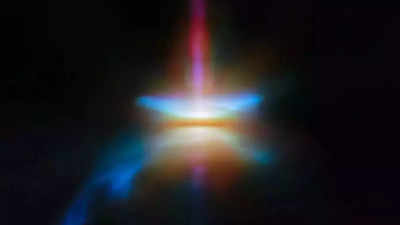The James Webb Space Telescope has just beamed a beautiful picture of a young star, HH 30, actively sculpting. This image reveals how the star energizes the surrounding space and will illuminate a protoplanetary disk, a region full of gas and dust that might give rise to a new solar system. The formation is 450 light years away within the massive stellar nursery, Taurus Molecular Cloud.
The latest findings on HH 30 were published on February 3 in The Astrophysical Journal. These observations contribute to the growing body of knowledge about star formation and the potential for new solar systems, offering astronomers an exciting new window into the universe’s cosmic processes.
James Webb Space Telescope captures image of a newborn star HH30
The James Webb Space Telescope recently took spectacular images of the HH 30 system, giving scientists a glimpse into star and planet formation. HH 30 is a bright nebula sited at 450 light-years away in the Taurus Molecular Cloud. It is created by high-speed jets of ionized gas that a young protostar emits. These jets into the surrounding gas and dust make waves as they crash into them, causing the material to illuminate. The system also features a dusty disk, seen edge-on, that may eventually form new planets. Webb’s observations allow astronomers to study the complex interactions of these jets and their role in shaping stars and planetary systems.
Much earlier images from Hubble only provided silhouettes of the dusty disk, but here with Webb comes detailed views that shall bring deeper insight into star and planet formation. HH 30 is one of the transient Herbig-Haro objects that evolve over thousands of years as their jets interact with the environment surrounding them. The results also contain information about the size and distribution of dust grains in the disk, which will help better understand what constitutes the building materials for planets and other cosmic bodies.
The role of bipolar jets in the HH 30 system and planet formation
The HH 30 system is an excellent example of bipolar jets. Bipolar jets are streams of gas traveling at high velocities from the central protostar. The system contains a dusty disk, which is viewed edge-on. The disk covers the central star, and eventually, material could condense to form new planets. Interaction of the jets with the surroundings provides a dynamic, time-dependent system and provides a means for seeing the development processes involved during star and planet formation.
Also Read | Austria’s rare ‘sun candle’ phenomenon goes viral in Lanč’s video, leaving social media users in awe: “Nature is so magical”

























































